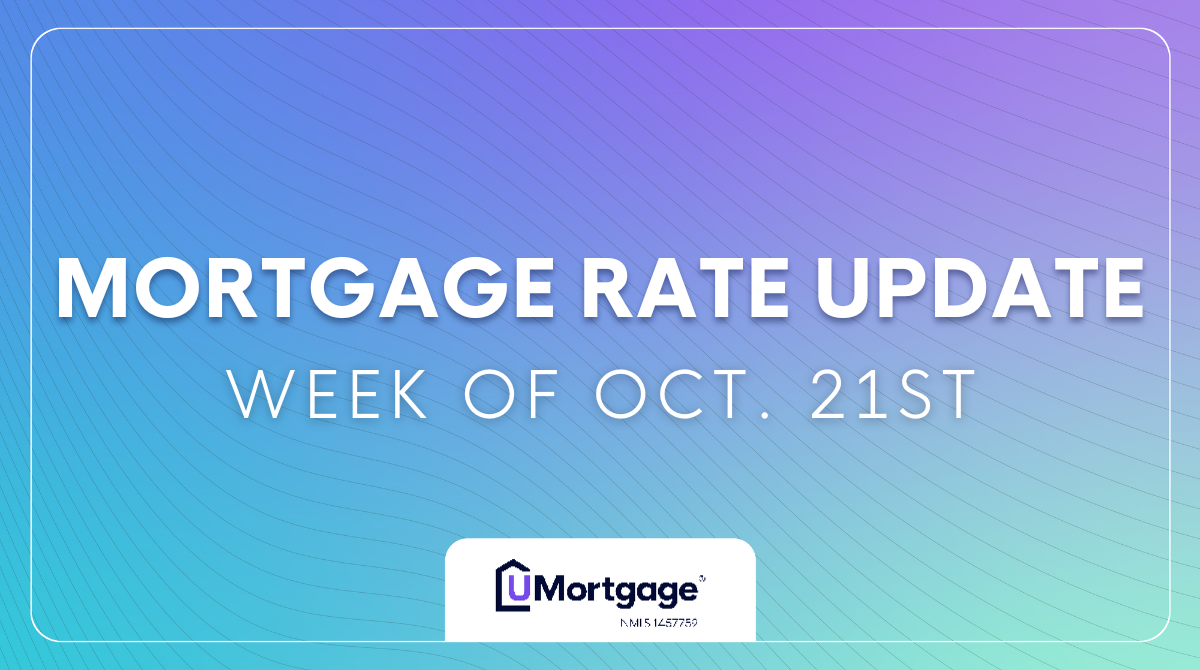

Leopoldo Gonzalez
Meet Leopoldo!
Travel enthusiast committed to helping people build wealth and finding freedom through real estate ownership! I strongly believe in integrity, honesty and professionalism which leads me to be the right person to help guide my clients to achieve the dream of homeownership.
Serving Homebuyers In:
- Florida
Mortgage Calculators
Monthly Payment
Find your monthly payment
What does a monthly mortgage payment look like for you? Get an estimate with some basic information.
Estimated Monthly Payment
The UMortgage mortgage calculators are for estimation purposes only. This is not a commitment to lend. For an exact quote based on your individual financial circumstances, please contact me.
Affordability
What is your budget?
Curious about how much you can afford to spend on a home? Use our calculator to get an estimate on your maximum budget.
Maximum Home Price
Maximum Monthly Payment
The UMortgage mortgage calculators are for estimation purposes only. This is not a commitment to lend. For an exact quote based on your individual financial circumstances, please contact me.
Refinance
Should you Refinance?
Refinancing might save money on your monthly mortgage payments, putting cash in your pocket. With some basic information from you, we can help decide if this is a good path for you.
Monthly Savings
Total Savings
The UMortgage mortgage calculators are for estimation purposes only. This is not a commitment to lend. For an exact quote based on your individual financial circumstances, please contact me.
VA Entitlement & Payments
Discover Your Buying Power With Our VA Home Loan Calculator!
If you are a veteran, an active-duty member of the military, or the spouse of a current or former military member, you are eligible to purchase a home with your VA home loan benefit! By using the calculator below, you can get a glimpse into your buying power and the estimated monthly payment of your VA loan as you start planning your homebuying journey.
Estimated Monthly Payment
Required Down Payment
Limit
$0
Entitlement Used
$0
Available Entitlement
$0
No Limit
How is my monthly payment calculated?
The UMortgage mortgage calculators are for estimation purposes only. This is not a commitment to lend. For an exact quote based on your individual financial circumstances, please contact me.
Your Mortgage Questions, Answered!

Housing Market Update | Week of October 21st
Mortgage rates inched slightly higher last week as the markets continued to digest some of the previous economic data we’ve seen concerning job growth and inflation. We have another quiet week without much market-moving data; however, we could potentially see rates come back down with some favorable data in a jam-packed week next week. Last Week's Mortgage Rate Recap Rates Rose Slightly There wasn’t much substance to the pieces of market data that we received last week to move rates significantly in either direction. We did, however, see some positive housing data that suggests increased supply and healthy demand. We’ve had 3 consecutive weeks of positive year-over-year growth in purchase application data and pending contract data. There’s also been another week of inventory growth; we currently sit 33% higher than we did this time last year. This Week's Mortgage Rate Forecast Rates Should Be Steady The only market movers we could see this week will be from the various Fed members’ media appearances and initial jobless claims on Thursday. That said, expect another relatively steady week. Next week, however, is action-packed and could change the market’s direction if we get favorable data from the various employment reports and our PCE report between October 29th and November 1st. This data will be instrumental to the Fed’s decision in their November 7th meeting. All things considered, we should see the market shift in a positive direction for us in the coming months. To help us navigate this shift, we’re hosting an exclusive event—Market Momentum: Industry Insights from Industry Leaders on Market Resilience—tomorrow at 3pm ET. We’ll have plenty of great perspectives shared by leading real estate agents, LOs, and industry executives. Follow this link to save your spot so we can tackle this market and make 2025 our best year yet!

Spruce Up Your Fall Open Houses With This Checklist
Autumn is the perfect time to create a warm, welcoming atmosphere that invites buyers to envision themselves living in the home they're visiting. As the weather cools and the leaves start to turn, real estate agents have a unique opportunity to set the mood for open houses by adding a touch of seasonal charm. With just a few simple touches, you can help potential buyers feel at home while also reminding them of important fall maintenance tasks. Here’s a checklist to give your open houses that cozy, autumnal vibe while also emphasizing the importance of seasonal upkeep. 1. Set the Mood with Fall-Scented Candles or a Simmer Pot When potential buyers walk into a home, the first thing they’ll notice is the atmosphere. Scents are incredibly powerful, so setting the right mood with fall-scented candles or a simmer pot with seasonal spices is a must. Opt for warm, inviting aromas like cinnamon, pumpkin spice, allspice, or cedarwood. These scents create an immediate sense of comfort and coziness. Tip: Choose subtle, natural fragrances to avoid overwhelming guests. You want the scent to be pleasant, not overpowering. For a fall-scented simmer pot, slice an apple, an orange, and a lemon and add to a saucepot. Sprinkle them with a tablespoon of nutmeg and ground ginger and add up to 5 cinnamon sticks. Cover with water, bring to a boil, and lower the heat to simmer for as long as desired. 2. Incorporate Seasonal Decor Fall is all about beautiful colors and textures, so why not bring those elements into your open house? You don’t have to go overboard—just a few tasteful touches will do the trick. Think decorative pumpkins, a simple wreath on the door, cozy throw blankets, and vases filled with autumnal foliage or wheat stalks. Tip: Neutral tones and natural materials, like wood and cotton, blend well with most interiors and help potential buyers focus on the home itself, not just the decor. 3. Create Cozy, Inviting Spaces Fall is the season of warmth and relaxation, so highlight areas of the home that encourage comfort. Stage the living room with plush pillows and soft throws or set up a reading nook with a comfy chair and a stack of books. If the home has a fireplace, make sure it’s clean and staged, and consider lighting it for the event (if it’s a gas fireplace) to showcase how the space could feel on a chilly evening. Tip: Dim lighting and warm, ambient lamps create a relaxed atmosphere that makes the space feel more intimate and inviting. 4. Highlight Outdoor Spaces with Seasonal Touches Don’t forget about the exterior! Add seasonal touches to the front porch or backyard to make outdoor spaces shine. A simple pumpkin arrangement or a few pots of mums can make a big difference. Clean up leaves and debris to ensure the yard looks well-maintained. Tip: Don’t forget to highlight the potential for cozy outdoor living. Adding a fire pit, some string lights, or a patio heater can inspire buyers to imagine gathering outside even in cooler weather. Seasonal Maintenance Tips to Share with Buyers In addition to creating a cozy atmosphere, fall is an important time for homeowners to tackle seasonal maintenance tasks. By offering these tips during an open house, you can help buyers think ahead and show that you’re a knowledgeable resource. 1. Turn Off Outdoor Spigots and Drain Hoses One of the most important fall tasks is to turn off outdoor spigots and drain hoses before freezing temperatures arrive. Remind buyers that failing to do so can lead to burst pipes, which can cause costly damage. Tip: Suggest purchasing insulated faucet covers to protect outdoor water sources during the winter months. 2. Clean Gutters and Downspouts Fallen leaves and debris can easily clog gutters and downspouts, leading to water damage when the rain starts. Make sure buyers are aware of this essential task to prevent overflow or ice damming during winter. Tip: A gutter guard can help reduce the amount of debris that accumulates, saving time and effort in the long run. 3. Trim Dead Limbs and Clean Up Spent Plants Fall is the perfect time to trim dead or damaged tree limbs to prevent them from breaking under the weight of snow or ice. It’s also a good idea to clean up spent plants and flowers from garden beds to give the yard a tidy appearance and prepare for next spring. Tip: Encourage buyers to save time in the spring by planting bulbs in the fall that will bloom early next year, like tulips or daffodils. 4. Inspect and Seal Drafty Windows and Doors With cooler weather coming, now is the time for homeowners to check windows and doors for drafts. Encourage buyers to inspect the home’s seals and weatherstripping to prevent heat loss and save on energy bills. Tip: Window insulation kits and door draft stoppers are affordable and effective ways to block cold air from seeping in. Adding fall vibes to your open houses is more than just setting the mood—it’s about helping potential buyers feel comfortable, welcome, and excited to imagine themselves living in the space. By combining seasonal decor and cozy touches with important homeownership tips, you’ll not only create a memorable experience but also position yourself as a trusted resource for your prospective buyers.

How to Navigate My Mortgage Calculator
Knowing your homebuying budget should be one of your first steps before you start the homebuying process. At UMortgage, we want to make this process as simple and transparent as possible, which is why we offer our Affordability Calculator to help you estimate the maximum home price and monthly payment that fits within your budget. Our Affordability Calculator takes key factors like your income, down payment, and monthly debts into account to give you an estimate of your homebuying budget. In the guide below, we’ll walk you through each step of the calculator to ensure you get the most accurate estimate. It's important to note that your results are not a pre-approval. To get an accurate pre-approval, follow this link to get connected with a UMortgage Loan Originator! Step 1: Enter Your Annual Income The first piece of information you’ll need to input is your annual gross income. This is your total income before taxes, including your salary, bonuses, and any other sources of income such as freelance work or rental income. Step 2: Input Your Proposed Down Payment Next, input the amount you plan to use for your down payment. The size of your down payment directly affects how much you’ll need to borrow. A larger down payment reduces the size of your loan, which also typically lowers your monthly payment and helps you avoid paying for private mortgage insurance (PMI) if you put down 20% or more. If you’re unsure how much you can put down, you can experiment with different amounts to see how they impact your affordability estimate. Step 3: Add Your Monthly Debts Now, it’s time to enter your monthly debts. Monthly debts should include any existing loans paid monthly. Examples include student loans, credit card bills, car payments, or any other money paid monthly to creditors. Monthly debts should only include borrowed money and not include services like your phone bill, home utilities, Netflix subscription, groceries, or other similar costs. Step 4: Estimate Your Interest Rate In this step, you’ll need to input your proposed interest rate. The interest rate significantly impacts your monthly mortgage payment. If you’ve already been pre-approved for a mortgage, you can use that rate. The featured interest rate when you go to the calculator is based on today's rates and is subject to change depending on your credit score and other factors. Step 5: Choose Your Desired Debt-to-Income Ratio The debt-to-income ratio (DTI) is a crucial factor in determining how much house you can afford. It’s the percentage of your gross monthly income that goes toward paying debts, including your mortgage. Most lenders recommend a DTI ratio of 36% or lower, but depending on your financial situation, you may be able to go higher. If you’re unsure what DTI ratio to choose, you can stick with the default 36%, which is a common guideline, or consult with your UMortgage LO for a more tailored recommendation. Step 6: Review Your Results Once you’ve filled out all the fields, UMortgage’s Affordability Calculator will do the rest! The calculator will estimate: The maximum home price you can afford based on the information you provided. Your estimated monthly mortgage payment, which includes principal and interest. These estimates will give you a clearer picture of what fits within your budget and help you start shopping for homes with confidence. Using UMortgage’s Affordability Calculator is an excellent way to get an initial sense of what home prices are within reach based on your financial situation. Remember, this tool is designed to give you an estimate—your final loan amount and mortgage terms will depend on other factors, such as your credit score, loan program, and lender-specific requirements. If you’re ready to take the next step or want a more accurate mortgage quote, we’re here to help! Fill out this form today to get connected with a UMortgage Loan Originator near you to discuss your options, get pre-approved, and get answers to any questions you may have about the homebuying process.
Serving Homebuyers In:
- Florida
